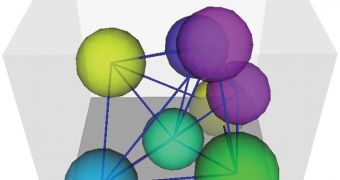A physics theory states that molecular chaos is an assumption that the velocities of colliding particles are uncorrelated and independent of position. Also called collision number hypothesis, it is useful in making numerous calculations tractable, but so far no one was able to experimentally prove it.
Air in any room is a good example of this theory, because the temperature in the room prevents nitrogen and oxygen atoms from flying off in one direction without some sort of external pressure change, even though the atoms are flying around with some average square speed.
That is, until recently, when a Baylor University researcher has created the first experimental observation of this molecular chaos, providing evidence that the widely accepted, yet unproven, assumption is indeed accurate.
"It was very exciting when it first happened upon the observation," said Dr. Jeffrey Olafsen, associate professor of physics at Baylor and a lead investigator on the project. "Prior observations have been made in computer simulations, but this is the first time it has been measured in an experimental system."
Olafsen, together with Dr. G. William Baxter, associate professor of physics at Pennsylvania State University - Erie, constructed two "gases," or layers, of ball bearings. In the layer where molecular chaos held, researchers measured Maxwell Boltzmann statistics, like those that predict the mean square speed of particles in the air in the room.
In the layer where the assumption of molecular chaos failed, the statistics did not obey Maxwell Boltzmann statistics. Perhaps the most interesting part, researchers said, is that the two "gases" were in contact with each other while simultaneously demonstrating their respective behavior.
"The two layers can be thought of as two gases simultaneously in thermal contact, and yet, one of the gases demonstrates molecular chaos while the other does not," Olafsen said. "It means that the particulars of how energy is injected and distributed within the two gases is important to understanding when a system will demonstrate molecular chaos."

 14 DAY TRIAL //
14 DAY TRIAL //